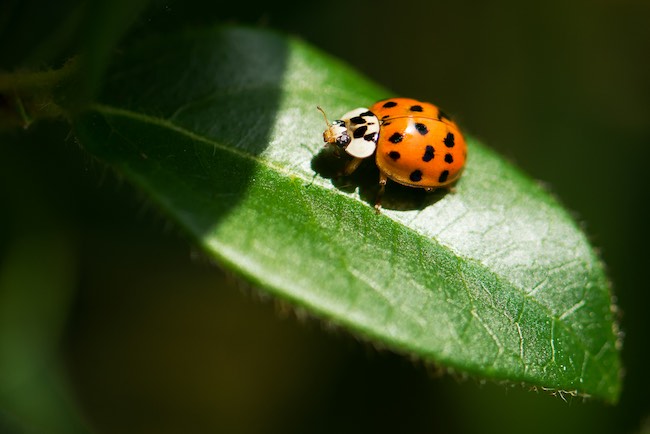Control aphids on fruit trees with Ladybird larvae

Using ladybird larvae (also known as ladybug larvae) to control aphids on fruit trees is a natural and effective method. Here’s a step-by-step guide to using them:
- Identify Aphid Infestation: First, make sure that aphids are present on your fruit trees. Aphids are small, soft-bodied insects that are often found on the undersides of leaves. They can be various colours, including green, black, brown, or yellow.
- Purchase Ladybird Larvae: You can buy ladybird larvae from garden centres or online suppliers. Make sure you’re getting larvae and not adult ladybirds, as the young larvae are more voracious eaters of aphids.
- Timing: Release the ladybird larvae in the early morning or late evening. These are cooler times of the day, which reduces the stress on the larvae and increases their survival rate.
- Release Near Infestation: Gently place the larvae near aphid colonies. It’s best to do this on a day that’s not windy or excessively hot. The larvae will start feeding immediately if they are near a food source.
- Provide a Water Source: While ladybird larvae get most of the moisture they need from their prey, in very dry conditions it can be helpful to lightly mist the leaves with water.
- Avoid Pesticides: If you’re using ladybird larvae, avoid using chemical pesticides. These can harm the ladybirds as well as the aphids. If you must use a pesticide, choose a soft option like insecticidal soap or neem oil, and apply it carefully.
- Monitor the Trees: Keep an eye on your fruit trees for both aphid levels and the presence of ladybird larvae. This will help you assess the effectiveness of the treatment.
- Support the Ladybirds: Once the aphids are under control, the ladybird population will naturally decrease due to the lack of food. To encourage ladybirds to stay in your garden, you can plant flowers that attract them, like marigolds, calendula, or dill. This provides adult ladybirds with nectar and pollen.
Remember, biological control methods like this are part of an integrated pest management approach. They work best in combination with other methods, such as maintaining overall tree health, monitoring pest populations, and using physical controls like water sprays to knock off aphids.



